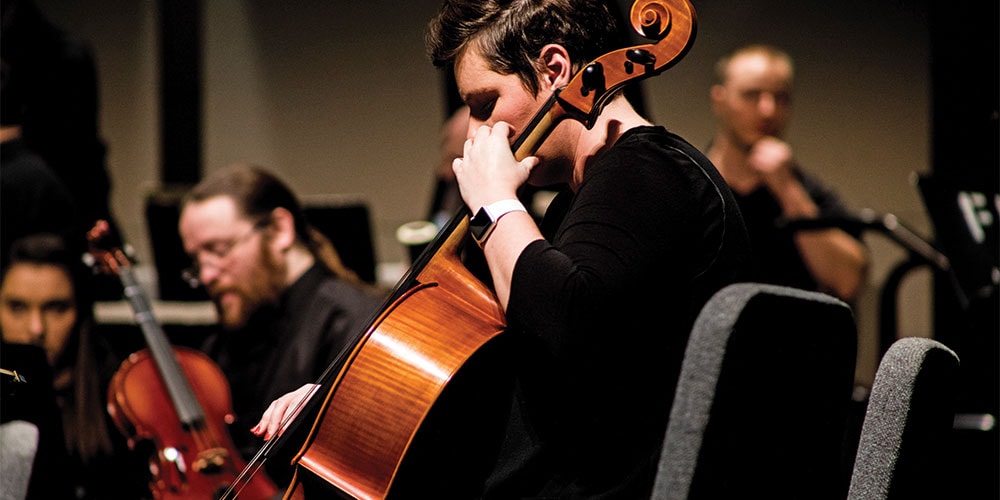
On a sunny spring morning at Southern Adventist University my daughter and I went into the sanctuary before the church service began. A quiet hum of voices filled the room as people found their seats. The platform contained many chairs and some large instruments. Coming from a small church, I was excited about hearing a full orchestra for worship.
The orchestra members gathered slowly, arranging their music and getting comfortable with their instruments. Dressed in black, they were easy to recognize from other members of the congregation. Those playing stringed instruments sat in one section, woodwinds in another, percussion in another, etc. Men and women, tall and short, they had one thing in common: their desire to worship God in music.
Eventually the director entered and walked to the center of the platform. She took her baton and tapped the stand. Everyone became quiet and gave her their full attention. When she lifted her arm, they began to play; what had been confusion in sound and sight became harmonious and organized.
I suddenly realized how important tuning is. If the musicians had not tuned their instruments, the sound would have been painful.
Tuning is usually based on a fixed reference. Tuning can be a verb: to be in harmony or accord; to become responsive. An orchestra is like a body of believers in a church. They need to be in tune with the Holy Spirit to make harmonious music that draws people to God. Notice this: “When the day of Pentecost came, they were all together in one place. . . . All of them were filled with the Holy Spirit and began to speak in other tongues as the Spirit enabled them” (Acts 2:1-4).
That’s being “in tune” with the Holy Spirit! It is essential to God’s church to bring us into one accord, to help us interpret the music.
What if the musicians didn’t all have the same music? Musical notation gives us notes, rhythm, directions to play the music as the composer intended. It gives instruction and direction.
It reminds me of what John wrote about Jesus: “In the beginning was the Word, and the Word was with God, and the Word was God. . . . The Word became flesh and made his dwelling among us. We have seen his glory, the glory of the one and only Son, who came from the Father, full of grace and truth” (John 1;1-14). Jesus is the music; God made visible.
The members of the orchestra may have played their instruments for many years and practiced many hours. They most likely had individual training. Perhaps they have performed solos. This has prepared them to become an ensemble. In an ensemble of instruments it is essential for each member to follow the conductor’s leading. The conductor knows the music well: where it is going and how to lead the musicians there. In order to act as one, musicians must listen, watch, trust, and obey their leader. That does not make them all alike, but it makes their differences harmonious.
God is our conductor. He knows each of us and draws us together in harmony. He guides the music through sunshine and wilderness. “I am the Lord your God, who teaches you what is best for you, who directs you in the way you should go. If only you had paid attention to my commands, your peace would have been like a river, your well-being like the waves of the sea” (Isa. 48:17, 18).
The Southern Adventist University orchestra has practiced many hours together. It is obvious that the conductor has corrected and refined them. My heart swelled with the worship they created for God through their music. Their love of music brought them together and motivated them to learn the music, tune their instruments, and follow the conductor.
Renee Ford writes from Cumming, Georgia.